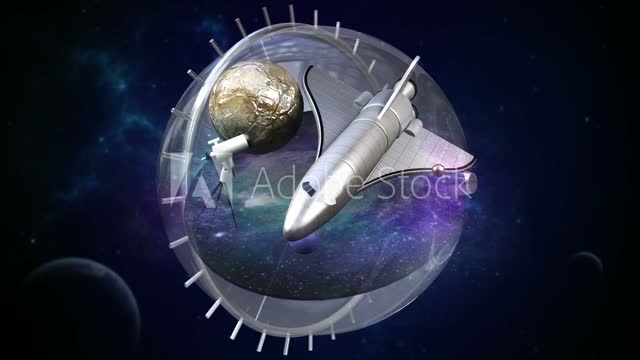Premium Only Content

NASA’s Webb Telescope captures ‘Phantom Galaxy’ in unprecedented detail
The Phantom galaxy captured by the James Webb Space Telescope is classified as a “grand design spiral,” which means that it has prominent and well-defined spiral arms.
Webb inspected the heart of the Phantom Galaxy. (Image credit: ESA/Webb, NASA & CSA, J. Lee and the PHANGS-JWST Team)
The James Webb Telescope captured this image that shows the heart of the Phantom Galaxy, which is officially known as M74. The stunning image reveals the delicate filaments of gas and dust in the spiral arms of the galaxy. The lack of gas at the centre of the galaxy also provides a view of the nuclear star cluster.
The Phantom galaxy is classified as a “grand design spiral,” which means that it has prominent and well-defined spiral arms, which is not the case for all spiral galaxies as some have patchy and ragged structures.
Also, Read |Listen to James Webb Space Telescope’s first images translated into sound
M74 is approximately 32 million light-years away from Earth in the Pisces constellation. It also lies almost face-on to Earth. Its position with respect to our planet and its well-defined spiral arms makes it a great target for astronomers studying the origin and structure of galactic spirals.
The Webb telescope observed M74 with its Mid-InfraRed Instrument (MIRI) to help scientists learn more about the earliest phases of star formation in our local universe. These Webb observations are part of the PANGS (Physics at High Angular resolution in Nearby GalaxieS) collaboration’s efforts to study neighbouring star-forming galaxies.
These observations by Webb will be used by astronomers to measure the masses and ages of star clusters, gain insights into the nature of the small grains of dust drifting in interstellar space and pinpoint star-forming regions in these galaxies.
Previous observations of the Phantom Galaxy by Hubble had revealed bright areas of star formations, which are known as HII regions. Webb’s high sensitivity at infrared wavelengths is complemented by Hubble’s sharp vision at ultraviolet and visible wavelengths. Scientists can gain greater insight into astronomical objects by combining the data from multiple telescopes operating across the electromagnetic spectrum.
About us https://bit.ly/3GUPFOa
Contact us +919942258153 kvk.subadhra@gmail.com
https://d39b98-93406cx49325fofwawf.hop.clickbank.net
-
 LIVE
LIVE
LFA TV
1 hour agoLFA TV ALL DAY STREAM - THURSDAY 9/4/25
13,728 watching -
 LIVE
LIVE
JULIE GREEN MINISTRIES
1 hour agoLIVE WITH JULIE
16,347 watching -
 LIVE
LIVE
Welcome to the Rebellion Podcast
11 hours agoDon3po is Live - WTTR Podcast Live 9/4
375 watching -
 13:43
13:43
The Kevin Trudeau Show Limitless
22 hours agoClassified File 3 | Kevin Trudeau EXPOSES Secret Society Brainwave Training
42.5K9 -
 LIVE
LIVE
The Chris Salcedo Show
12 hours agoAmericans Are Tired Of Leftists & Fake-GOP Who Cater To Them
681 watching -
 LIVE
LIVE
Game On!
19 hours agoFootball IS BACK! Cowboys vs Eagles Opening Night Kickoff!
3,722 watching -
 LIVE
LIVE
The Bubba Army
22 hours ago#1 Documentary IN THE WORLD! - Bubba the Love Sponge® Show | 9/04/25
3,101 watching -
 39:31
39:31
Her Patriot Voice
13 hours ago $1.07 earnedBlack Conservative Surrounded + ROBBED By Leftists!
2.06K21 -
 13:25
13:25
The Gun Collective
14 hours agoWOW! A LOT of new GUNS just dropped!
2.84K7 -
 LIVE
LIVE
BEK TV
23 hours agoTrent Loos in the Morning - 9/04/2025
219 watching